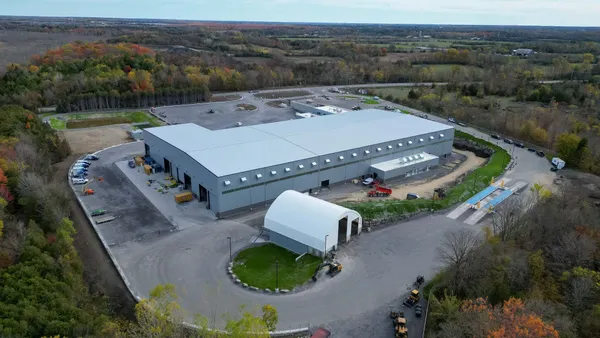Dive Brief:
- The new $108 million North Transfer Station in Seattle seems to have struck a balance between function and community benefits that can be difficult for such projects. Some of its most prominent new features include solar panels, a green roof, an angled wall to keeps noise within the building, quick up-down doors to limit odors, earthquake-resistant design and a back-up generator, as reported by The Seattle Times.
- The original transfer station that was located on this site allowed people to toss their waste into a large open pit. Now, their waste is pushed into a chute that takes it underground to be compacted and placed in shipping containers bound for a rail yard. Putting these operations underground helps control truck traffic and gives the building a lower profile.
- In addition to offering free recycling and reuse drop-off for a wide range of materials, the facility also has a basketball court, a rain garden, art made from excavated rebar and a playground.
Dive Insight:
Compared to the original station that was built in 1967, this one is seen as a much safer alternative. As recently highlighted by consultants for Oregon's Lane County, the potential for accidents is higher when residents can drive up to open pits. Mixing residential and commercial traffic can also be problematic, which is why the new station was designed with separate sections.
Seattle Public Utilities has recognized that this level of community cooperation is rare when it comes to siting waste facilities in urban neighborhoods. A new city transfer station in Albuquerque has been delayed by zoning issues and similar legal challenges have also held up construction in other municipalities. As seen recently in New York and parts of California, community opposition to existing facilities near residential areas is an ongoing issue.
Finding ways to site these types of facilities in central locations will make the "zero waste" goals of cities such as Seattle more attainable. Transportation costs will be lower and communities can develop a more positive relationship with what happens to their waste. Costs and logistics can be challenging but architects have already come up with plenty of ideas that could inspire other cities to emulate this approach.










